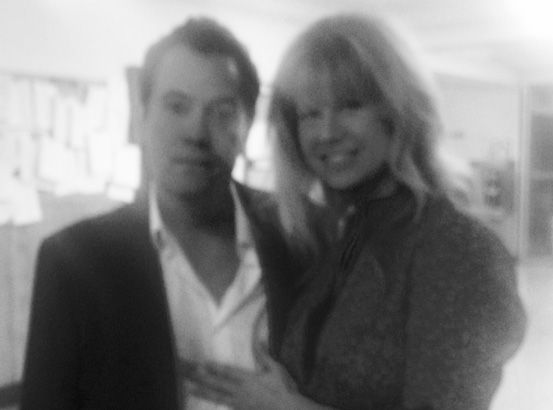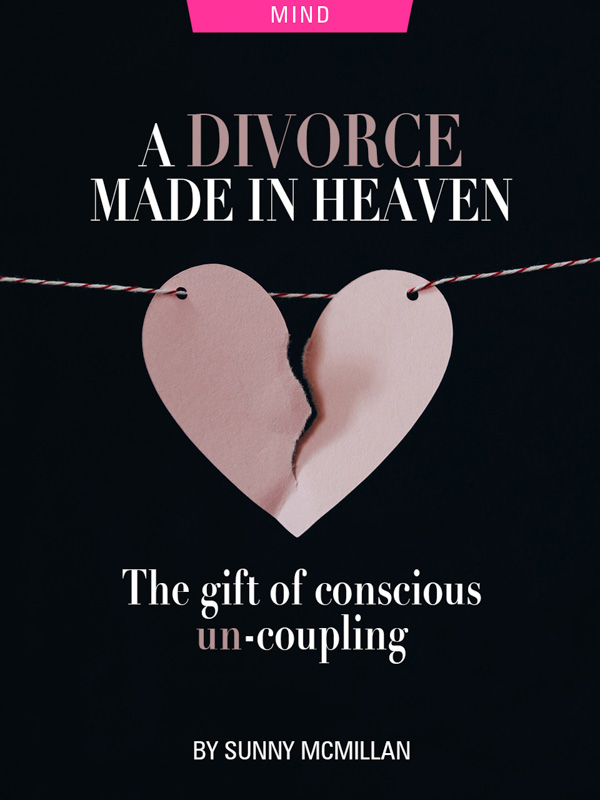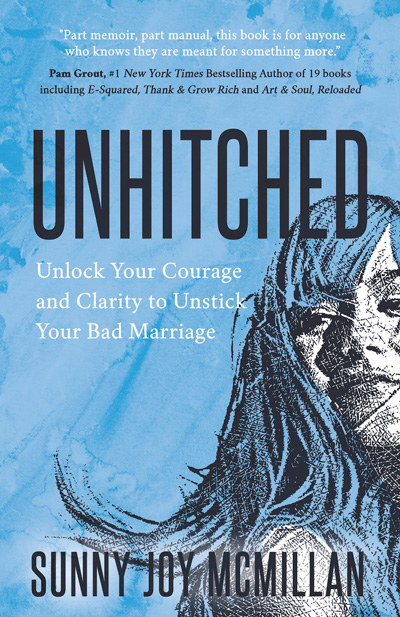Divorce is not for the faint of heart, it is for the strong of spirit. If done consciously, it can be a potent catalyst for transformation and healing.
—
We held hands as we approached the courthouse. Not quite sure what to expect, we were nervous and full of emotion. I wore a special dress I’d purchased just for the occasion. He wore his most dapper sport jacket. We’d thoughtfully crafted vows to reflect our intentions and commitment to one another as we embraced this next chapter of our lives. As we neared the building entrance, I spotted a pristine white feather resting on the pathway ahead. I took this as a wink from the Universe that we were on the right track.
Once inside, a notary public graciously agreed to take our photo to commemorate the event. In it, our embrace looks comfortable and familiar. We made our way to the correct courtroom. After a short wait, the judge called our names. With my arm in his, we approached the bench. We stood hand in hand as she asked us the requisite questions. We responded through tears. By the end, even the court reporter was crying. It was a profoundly meaningful ceremony. And with it, we were… divorced.
The journey to such a graceful ending was anything but easy, and we were just about the worst bet ever for a peaceful divorce.

Two strong-willed attorneys, our personalities meshed like kerosene and fire from our first date – a date that ironically ended in a fight. That initial disagreement foreshadowed what was to later become an incredibly high-conflict marriage. It was a marriage where fights were explosive and frequent. They happened in public, in private, and everywhere in between.
Despite the discord, however, there also was a deep connection. We shared values and a passion for social justice. We debated philosophy and spirituality for hours on end. He challenged and grew me in ways no one else ever had. An Erin Brockovich-style attorney who regularly took on some of the largest chemical and pharmaceutical corporations in the world, I was in awe of this self-made man who came from little to co-found a successful multi-city law firm.
As the relationship progressed, I chose to focus on our points of connection while I simultaneously ignored the red flags, like the constant fighting, as well as my gut sense that we may not have been an ideal romantic match. I chose to ignore the still, small voice of my wisest, most authentic self, which was no match for my ‘social’ self — the part of me that was more concerned with impressing and not disappointing others.
It was my ‘social’ self that ultimately convinced me to override my gut in pursuit of a perfect life on paper.
Back then, I believed a perfect-looking life and marriage would solve all of my problems, the largest of which was a cripplingly-low self-worth. I’d spent years in search of every possible crutch I could find to prop it up. And I looked just about everywhere – outside myself, that is: unnecessary plastic surgery for the parts of my body I loathed; copious amounts of alcohol to feel more comfortable in social settings; a law degree to prove the intelligence I doubted; and the coup’ de grace, marriage to a powerful man in order to avoid the terrifying work of standing on my own.
It was far easier and safer to ride his coattails and support his success than to create something of my own.
Although my husband never asked me to, I essentially put all my eggs — my time, my toil, my talents – in his basket. But I soon discovered you cannot hand over all your eggs without consequence. Adding to the already high level of conflict in our home, I became resentful and angry with him for holding all the power — power I had ever so willingly entrusted solely unto him.
What I have since learned is that anger, much like all of our human emotions, is simply a messenger.
Social science researcher, Karla McLaren, actually calls anger ‘the honorable sentry’ who signals the violation of an interpersonal boundary. But it wasn’t my husband who was doing the boundary violating in this case. It was I. By attaching my self-worth to something outside of myself (e.g., my husband), I had violated one of my own sacred boundaries.
Over time, the river of resentments became a tidal wave, despite much counseling and some of the best marital resources we could find. From the outside, our life had never looked so shiny and Instagram perfect. On the inside, however, our marriage was at the height of its dysfunction, and my worth and relationship with myself was in shambles.
Ten years into the relationship and seeing little potential for improvement, I made the difficult decision to leave. I would love to say that from there, we effortlessly glided through the proceedings into the graceful divorce ceremony described above. Instead, that victory was harder won, involving a progression of steps over the course of several years.
I first had to reclaim the self-worth I’d been so quick to attach to externals like my education, my work, or my husband.
I then had to take radical responsibility for my part in helping create such a difficult marriage. I had to show up wholeheartedly for hard conversations. And I had to make amends and express gratitude where it was due. Only then were we able to come together for true healing and the blessing of a beautiful post-divorce friendship.
That initial step of reclaiming myself was incredibly uncomfortable, but my divorce was the perfect setup. On my own and with plenty of space for self-reflection, I began actively listening for the voice of my wise, authentic self over that of my social self. I also was no longer able to hide behind the armor of a successful husband or flashy lifestyle. I felt exposed and vulnerable, like a turtle without a shell.
That place of absolute vulnerability was quite synchronistic, however, as it allowed me to look for my worth where I’d never looked before: inside, to the spiritual being having the human experience.
And in the boldest move of surrender in my life to that point, I asked the Universe to take the reins.
In response, breadcrumb after serendipitous breadcrumb appeared on my path to lead the way. These breadcrumbs took me to incredible mentors like Dr. Martha Beck, as well as wisdom traditions and spiritual teachings that told me something the religious dogma of my youth never had: Born magnificent and worthy I was. Worthy not because of my religion; not because my body was the right size; not because of the degrees I held; and not because I was married to a successful man. I was worthy just by virtue of being me, a cherished droplet from the sea of the Divine.
My self-worth was born anew from a solid foundation.
It was only from this place of worth grounded in divine love and connection that I felt safe and courageous enough to take the terrifying step of looking at my part in creating such a dysfunctional, conflict-ridden marriage.
To end our marriage, we had opted to use the Collaborative Law process, which meant we agreed to resolve the matter outside of a courtroom with the help of a team of trained professionals. But while the collaborative model offers a gentler approach than traditional family law, even the best of legal circumstances do little to address the emotional and spiritual needs of the parties during the proceedings.
As I began to heal myself, I felt an intense urge to turn the healing energy toward my rocky relationship with my ex. We’d been civil during the process, but merely civil was no longer enough for me.
Much like a desire to spring clean and declutter, I wanted to clean my side of the marital street.
It was a street littered with the debris of resentments, unexpressed feelings, and loose ends, like my continued insistence that my husband had been the instigator and root cause of all our conflict.
A fierce and fearless litigator, he was an easy scapegoat for my ‘poor, poor, pitiful me’ stories. After years of pointing a stern index finger at my husband as the source of all our marital misery, however, a few key teachers, most importantly Byron Katie, helped me see instead the three fingers that had been pointing back at me all along.
For ages, I’d worn like a badge of victim honor, the belief that I had a hot-tempered husband who was hell-bent on controlling me. Katie’s system of inquiry, The Work, allowed me to examine the painful story I’d been carrying and explore whether the opposite of this rage-inducing thought might be true.
In other words, could it possibly be just as true that my husband had a hot-tempered wife who was hell-bent on controlling him? Yes, it could. Although my trigger points and hot button issues were different than my husband’s, I begrudgingly had to admit that I, too, had a fiery disposition and a strong desire to get my way. I soon realized I was so obsessed with collecting evidence of my husband’s bad temper and controlling tendencies, I’d glazed right over my own.
With further examination, other painful thoughts like:
‘My husband should have cared more’ became their opposite: ‘I should have cared more.’
I found so many places where that could be true, not the least of which was my tendency to prioritize a perfect marriage façade over the true emotional intimacy my husband desired.
This exercise of questioning all the negative, resentful thoughts I carried about my husband snowballed. I soon realized I was no longer a victim, but a co-creator in our marital woes, and I was deeply sorry for my actions.
For so long, I had resisted taking responsibility for any part of the unhappiness of our marriage, fearing it would leave me feeling vulnerable and diminished — that by admitting any wrongdoing, the playing field would no longer be level and I would be left in a power deficit. Instead, however, this exercise had the opposite effect. Owning my part became incredibly empowering. Emboldened, I took the final, most transformative step of my healing journey: sharing my newfound discoveries and revelations with my husband.
From Byron Katie’s book Loving What Is: Four Questions That Can Change Your Life, I was inspired to make amends by reporting on my role in our conflict. For so long, I had desperately wanted validation that my husband was the bad guy. But I now had a choice:
Do I want to be right, or do I want to be free?
So I wrote a long letter to him conveying all of my regrets without any justifications. There would be no more, But you started it! protestations.
I also shared everything I appreciated about him as a spouse, as well as the things about our marriage for which I was grateful. When I sent that letter, there was no guarantee he would respond, or even read it. No matter. The exercise of simply writing it, regardless of the outcome, was incredibly healing.
Two years after I left my marriage, my side of the street finally felt clean.
When my soon-to-be-ex-husband did actually read it and respond in a gracious and loving way, it was icing on the cake. And what sweet icing it was. Taking responsibility and making amends paved the way for us to finalize our divorce with the meaningful ceremony described above.
Much like the thought and careful preparation that went into planning our wedding all those years before, we were able to honor the ending of our marriage in a similar way.
The responsibility and amends process we shared also paved the way for four years of the most incredible post-divorce friendship I could have imagined, one in which we finally communicated with kindness, tearfully shared our regrets, and reminisced with laughter over a decade of shared experiences.
When my ex-husband passed away unexpectedly in 2018, I feel both proud and blessed to say there were no words left unsaid and no apologies left unoffered. The resentment and anger that fueled my departure feel like a distant memory. In its place, I now feel an abiding love and appreciation for the man that he was.
Divorce is not for the faint of heart, it is for the strong of spirit. If done consciously, it can provide one of the most potent catalysts for transformation available. Only through my own path from high-conflict marriage to a loving post-divorce relationship with my ex-husband was I finally able to discover my own strength of spirit and the self-worth I’d been seeking all along.
You may also enjoy reading 6 Steps to Move from Divorce to Happily Ever After by Sage Cohen

